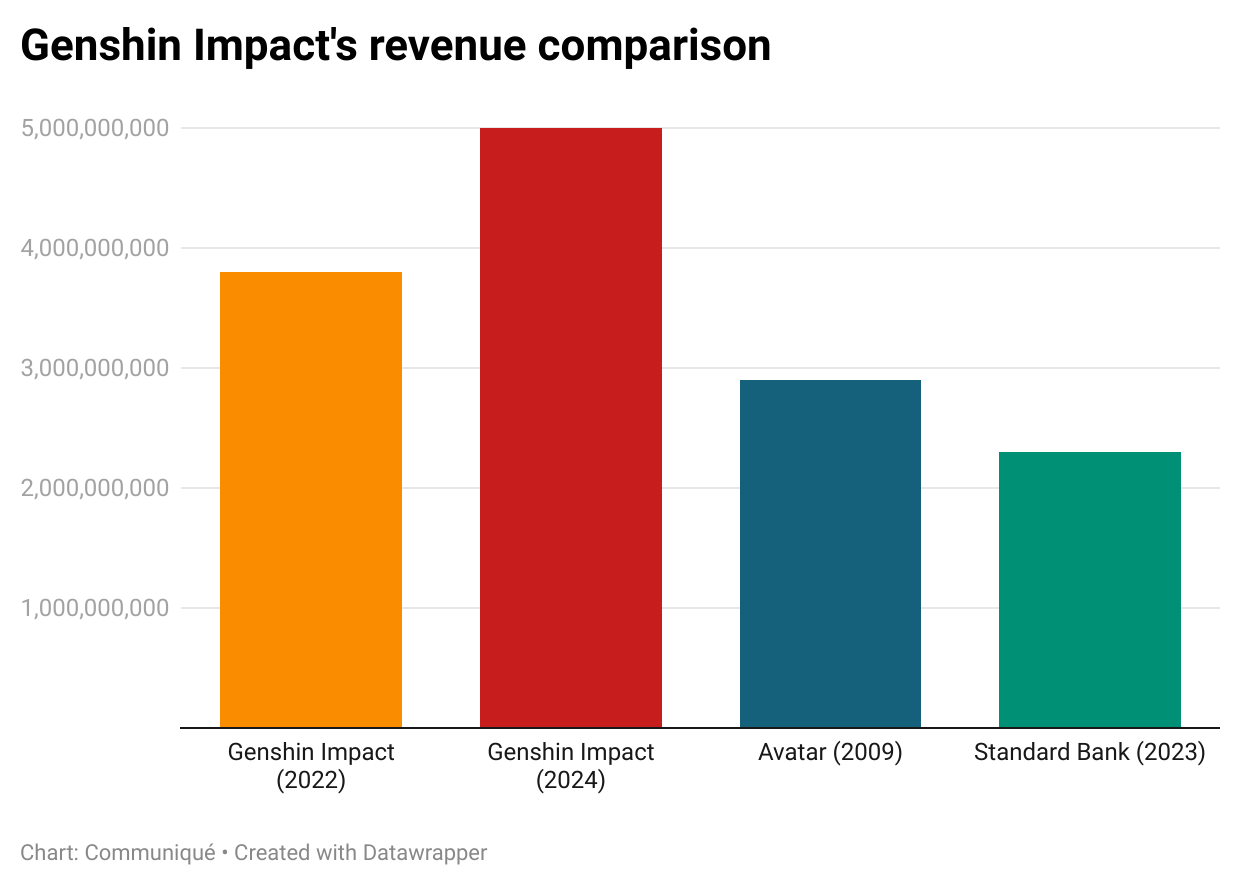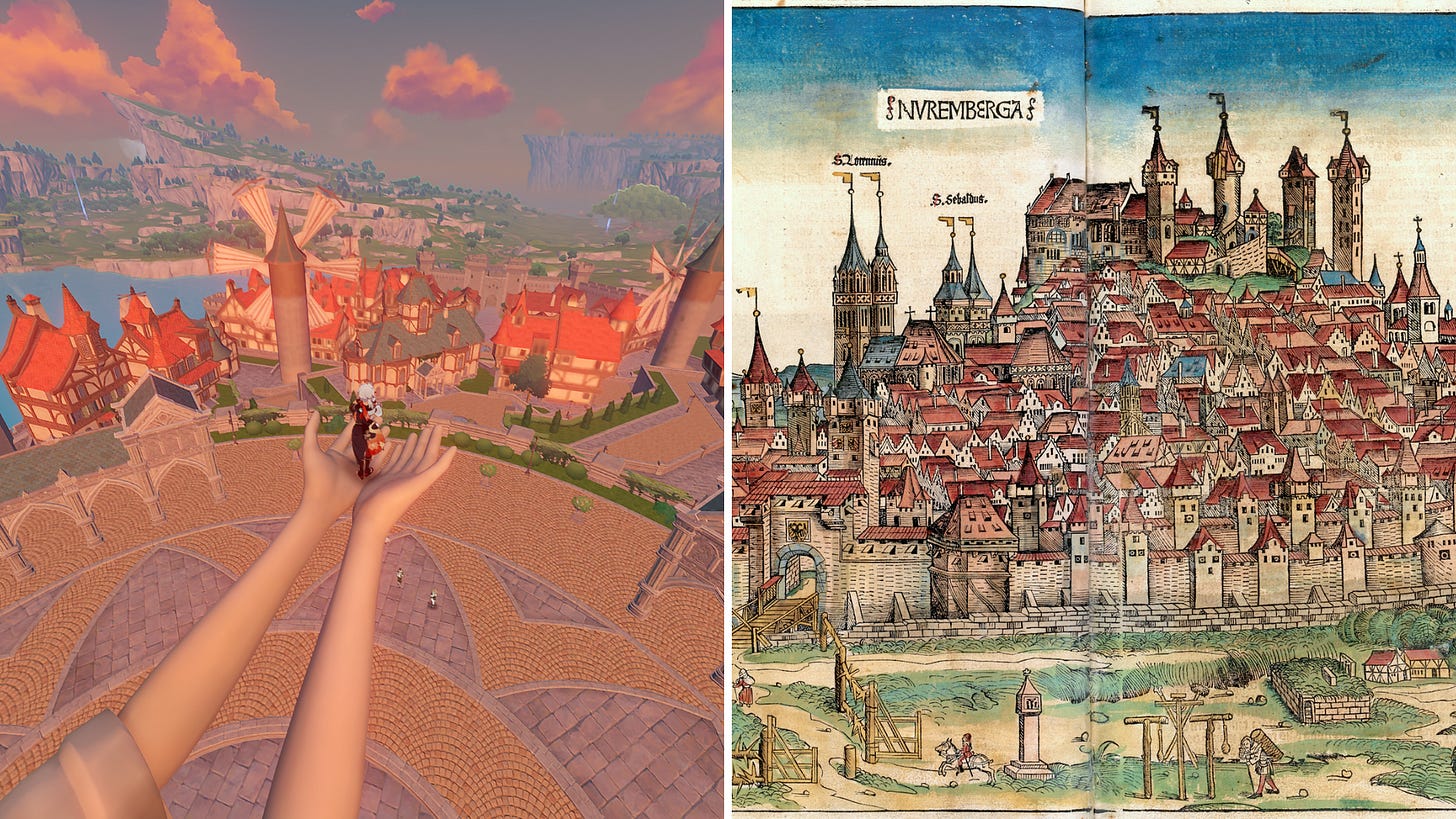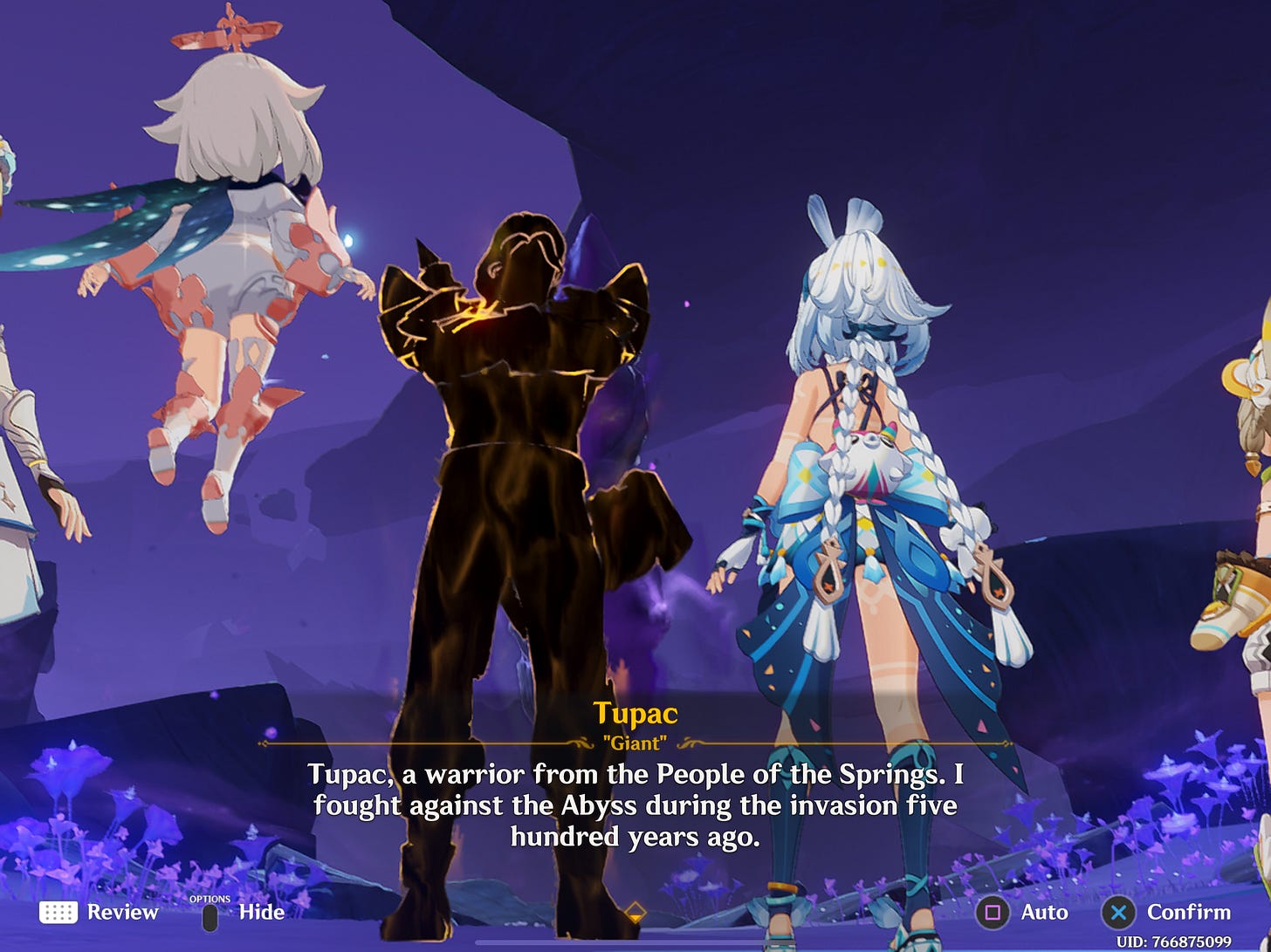Communiqué 44: What a popular Chinese video game can teach us about Africa’s creative economy
Within five years, Genshin Impact, a video game with a truly global outlook, has brought in over $5 billion in revenue. What can African creators learn from it?
1. The global phenomenon
On September 28, 2020, amid the global upheaval of the COVID-19 pandemic, a Chinese video game developer and publisher MiHoYo released a title that would take the internet by storm. The anime-style open-world, cross-platform action game features elemental magic and character-switching mechanics. Despite its complex description, Genshin Impact — the game — launched to widespread critical acclaim.
Genshin Impact debuted as a free-to-play title, monetized through Gacha game mechanics (which essentially involves inviting users to spend in-game currency for a random in-game item). Its success was fueled by captivating storytelling, stunning anime-inspired art, intricate world and character design, and the surge in digital consumption brought on by worldwide lockdowns.
By 2021, the game had become one of the highest-grossing mobile titles, and by 2022, it had generated nearly $3.8 billion in revenue. As of 2024, estimates suggest that in China alone, Genshin Impact has surpassed $5 billion in lifetime gross revenue on iOS and Android—figures that exclude revenue from other platforms such as Windows and PlayStation. Considering the game’s reported production cost of around $100 million, this represents an extraordinary 50x revenue multiple on mobile platforms alone. For context, Avatar, the 2009 sci-fi epic by James Cameron, is the highest-grossing movie of all time with $2.9 billion. It cost about $300 million to produce. In comparison, Standard Bank, one of Africa’s largest, made $2.3 billion in headline earnings in 2023. Talk about returns.
2. The Genshin impact
In Communiqué 40: Culture in a box, we highlighted Korea’s global influence through film, music, cuisine, and more. In a similar vein, Genshin Impact is a remarkable example of cultural exports that transcend national boundaries. Let’s look closer at the game’s setting, for instance. Genshin Impact unfolds in the world of Teyvat, a fictional realm with seven distinct nations, each associated with a particular element of nature and governed by a deity known as an Archon. Each nation draws cultural and historical inspiration from a region in the real world. For instance, Mondstadt, the first nation game players encounter, is modeled after historic Southern Germany and Europe, reflected in its architecture and local cuisine, such as sauerkraut.
The other nations, like Sumeru, Fontaine, and Natlan, are inspired by places like India, Europe, and Latin America/Africa respectively. The game’s worldbuilding is influenced by the cultural elements of these regions. Yet, where some cultures have been thoroughly represented, others face challenges. This is particularly evident in Natlan, inspired by Latin America and Africa. The depiction of Natlan’s characters sparked controversy over allegations of whitewashing, as characters who might be expected to reflect diverse skin tones appear strikingly lighter. For example, characters such as Ekwensu (from Igbo culture in Southeastern Nigeria) are conspicuously white for what should be a region with melanated people. Also, there is a character named Tupac. (Not strange at all.)
In addition to the controversy, there are two broader points to examine. The first is that creators often draw inspiration from global cultures, which implies a collective responsibility to ensure that every culture has a voice. If a culture is absent from this narrative, it risks being depicted in inauthentic ways. Secondly, the creative economy is far-reaching, generating indirect value streams that extend beyond immediate revenue. In Genshin Impact’s case, this includes:
Streaming revenue for the composers of the game’s soundtrack
Monetization for streamers on YouTube and Twitch who have built niches around the game
Merchandizing in the form of figurines and collectibles such as plushies, posters, phone cases, and beddings.
Events such as pop-ups for fans, and live symphony performances that tour (currently touring Europe)
3. Taking notes
The creative economy represents an immense opportunity for strategic capital deployment. Traditional approaches to assessing project or venture potential often fall short when applied to creative industries. We need innovative funding frameworks that appreciate the unique nature of creative ventures and provide tailored support for them.
Few conventional investments can deliver a 50x return within a few years, as Genshin Impact has done. The creators used all of their capital, plus additional capital from loans with the entire company as collateral, to develop the game. In retrospect, this was a lost opportunity for venture capital firms and other financiers. Institutions seeking to deploy capital must work to understand the context of the creative industry and also learn where to deploy the capital in the value chain. For instance, banks may be unable to fund the development of movies and video games because of the time to market and financial accounting requirements, however, they can finance the distribution of the final content.
Using Avatar as an example again, it reportedly took an additional $150 million to market the film. For an investment firm looking to participate in the creative economy, this can be a more accessible entry point in the lifecycle of movie production because there’s now a shorter time between investing and getting returns. However, if they want to participate earlier in the production lifecycle, which is far more lucrative, they must find a way to deploy patient capital.
Moreover, creators must create with a global mindset and for global distribution. For instance, Genshin Impact is played all over the world and supports multiple in-game languages. Players will encounter other users from countries like Brazil, Spain, Turkey, Russia, and South Africa in-game, with game servers provisioned for North America, Europe, and Asia.
For African video game and movie production studios, there’s a tendency to tell stories and build primarily for local consumption and with inwardly-facing narratives. Creating for a global audience will require them to be intentional about the quality and structure of their content, irrespective of the setting or context. This means that creators must think about elements such as international distribution channels, multi-cultural reach, and multi-language support, whilst securing international partnerships for monetization, and distribution.
There is a reason Hollywood blockbusters routinely tweak titles and content for international audiences, and African creators must learn to do the same.







